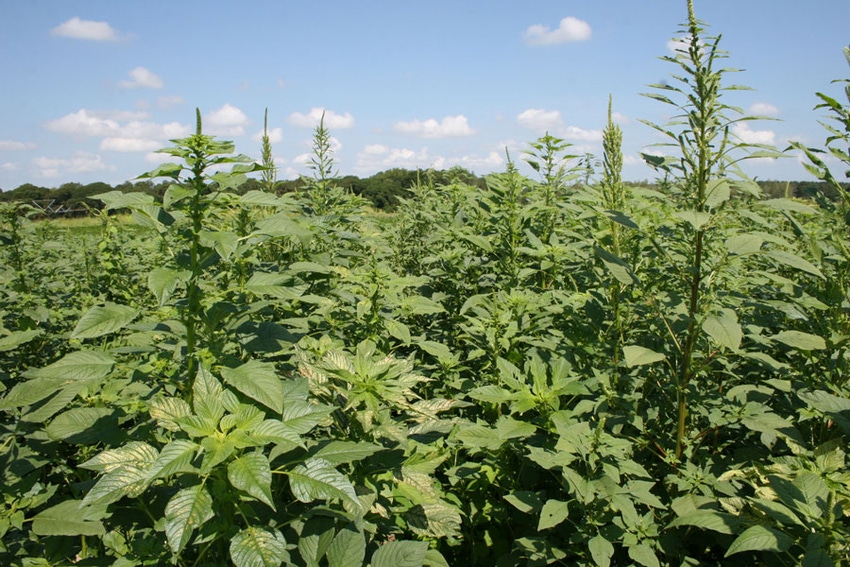
Even the best made and implemented weed management strategies can fall short of the glory of perfect, clean fields come summer. And Palmer amaranth will take advantage where it can. As you look over the cotton field now, you see them getting bigger by the day. If all else fails, best go manhandle them out of there and keep a bad thing from getting worse next year.
Georgia cotton growers have a come a long way in their battle with pigweed, and they are winning. But intelligent management decisions can still fail, and weather conditions were less than cooperative this spring and early summer for perfect weed control. ‘The key is accepting it (pigweed) is going kick your tail sometimes, but then going back and making the right management decision again," said Stanley Culpepper, weed specialist with the University of Georgia Cooperative Extension.
If Palmers are popping up, get out there and remove them before the weed starts producing seed, which most growers now know it can do at an amazing level. But Palmer seeds are weak and don't last long in the soil, the only edge this weed gives to growers. "If they are seeing just 10 plants per acre, it is important to get those plants," Culpepper said. "And with good hand weeding, and if done right, we can see a significant change in the seedbank in just three or four years," he said.
Competitive problem
Basically, an unchopped pigweed will produce near 400,000 seeds in dryland cotton production. One chopped to six inches will regrow and still produce 130,000 seeds. If you get it down to one inch, it still produces 36,000 seeds. And, finally, if it's chopped all the way to the soil, well, it still regrows and gives you 22,400 seeds.
"Even if you pull it up, it can still resucker if any part of the root touches the soil. ... You have to get out there and not just whack it off but remove 100 percent of the above ground plant but really you have to get those roots in the air as much as possible or get it out of the field," Culpepper said.
It is important to remember that it is all a numbers game. If herbicide resistance can be found in that one plant in a million or even 10 million, then you don't really need that much cotton acreage to find it. In samples taken from 100 growers' fields in Georgia, having 25 pigweed plants emerge per square foot was common.
To find that one resistant one, in this case you only need 9.18 acres of cotton. "But let's just say that resistance happens in just one in a billion plants, still then you only need 918 acres of cotton to get it," he said.
Want access to the very latest in agriculture news each day? Subscribe to Southeast Farm Press Daily.
More from Southeast Farm Press
Irrigation scheduling tools seen as a key to conserving water in Southwest Georgia
Mid-season herbicide considerations for peanuts
USDA emphasizes limited scope of genetically engineered wheat find
High feed costs put a premium on quality hay
About the Author(s)
You May Also Like






